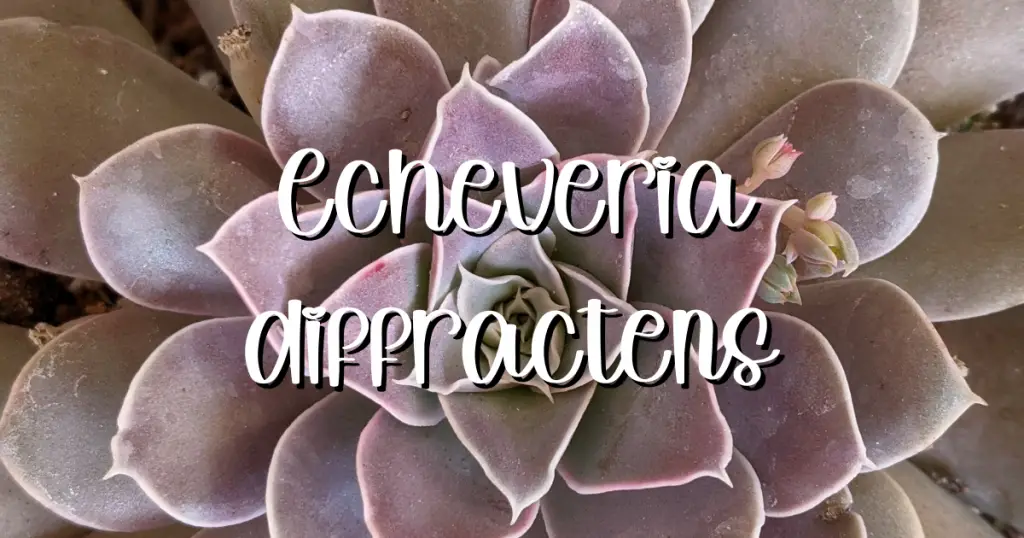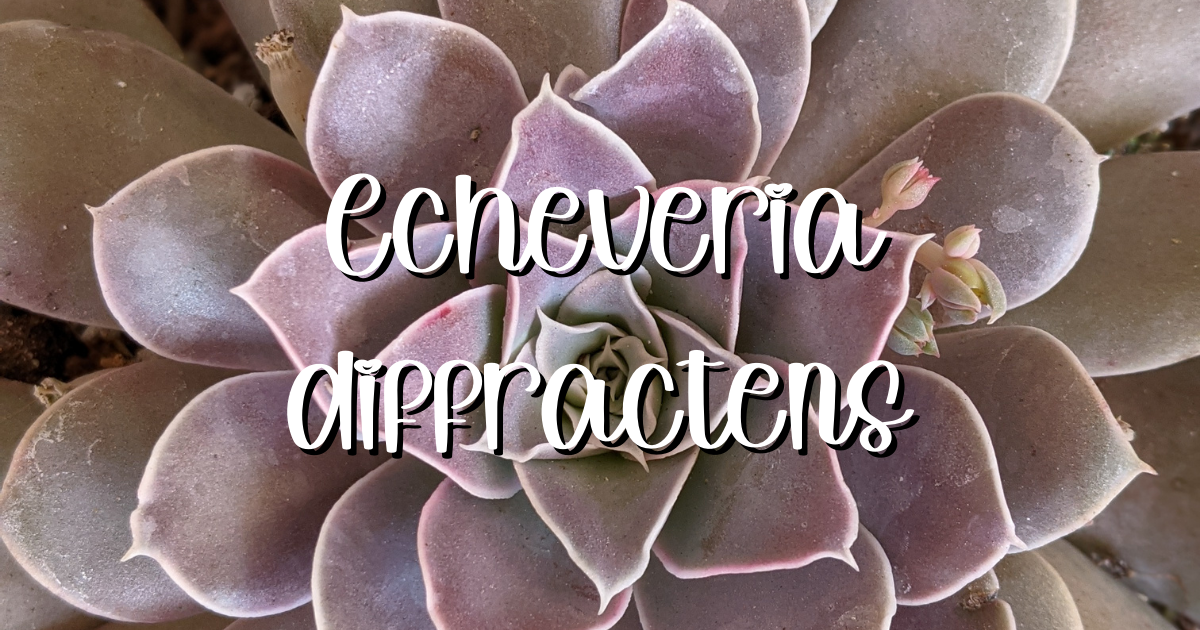Echeveria diffractens, also known as the ‘Shattering Echeveria’, is a beautiful succulent species from Mexico. This slow-growing plant is loved for its flattened rosettes and bright orange flowers. In this guide, you will learn about its growing requirements, care tips, and propagation methods.
Dig in!

What is the ideal light for ‘Shattering Echeveria’?
Echeveria diffractens ‘Shattering Echeveria’ thrives in full sun to light shade. For indoor plants, an east or west-facing window that provides four to six hours of sunlight is ideal.
You might like: 5 Essential Mental Health Benefits of Gardening Succulents and Cacti
What type of soil is best for Echeveria diffractens ‘Shattering Echeveria’?
Echeveria diffractens ‘Shattering Echeveria’ grows well in a well-drained succulent mix, with an ideal pH of 6.0 (slightly acidic). An equal part of inorganic grit like pumice or Turface with all-purpose potting mix can also be used.
How often should I water Echeveria diffractens ‘Shattering Echeveria’?
Water Echeveria diffractens ‘Shattering Echeveria’ regularly during the summer and spring. Keep the soil evenly moist but not soggy. You can allow the topsoil to become slightly dry between each watering. Reduce water in the winter.
What is the preferred temperature for ‘Shattering Echeveria’?
Echeveria diffractens ‘Shattering Echeveria’ prefers an average summer temperature of 65ºF / 18ºC – 70ºF / 21ºC. In the winter, the temperature should be cool, around 50ºF / 10ºC. Echeveria diffractens is hardy to around 25-30°F (USDA hardiness zone 9-11).
What is the best fertilizer for ‘Shattering Echeveria’?
Fertilize Echeveria diffractens ‘Shattering Echeveria’ with a controlled-release fertilizer at the beginning of the season or weekly with a weak liquid solution. Use a balanced NPK fertilizer and dilute it to at least 1/2 strength on mature plants, and a fertilizer with less nitrogen on young plants.
When should I re-pot ‘Shattering Echeveria’?
Re-pot Echeveria diffractens ‘Shattering Echeveria’ as needed, preferably during the warm season. Make sure the soil is dry before re-potting, then gently remove the pot. Knock away the old soil from the roots, and treat any cuts with a fungicide. Place the plant in its new pot, backfill with potting soil, and leave it dry for a week. Then begin to water lightly to reduce the risk of root rot.
You might also like: Do succulents need sun?
How can I propagate Shattering Echeveria?
Echeveria diffractens ‘Shattering Echeveria’ can be easily propagated by seeds, offsets, or leaf cuttings in spring. To propagate a leaf cutting, place the individual leaf on top of a succulent or cacti mix and wait until roots form. As its name suggests, the leaves fall off rather easily so propagating by leaf is probably where you’ll find yourself. I’d liken it to Echeveria prolifica in terms of fragility.
What pests or diseases should I be aware of with ‘Shattering Echeveria’?
Echeveria diffractens ‘Shattering Echeveria’ has no serious pest or disease problems. Mealybugs can be a problem, and if dead leaves are not expelled from the plant, it can attract other insect pests or have problems with fungus.
Echeveria diffractens ‘Shattering Echeveria’ is a beautiful and easy-to-care-for succulent species. With its flattened rosettes and bright orange flowers, it is a great addition to the succulent garden or for use in containers. Follow the care tips and guidelines outlined in this guide to ensure its success in your home or garden.
You might like: The Best Way to Water Succulents

